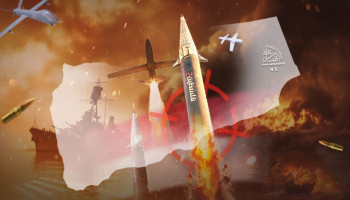The American magazine “National Interest” has reported that the U.S. Navy’s forced replacement of the aircraft carriers Eisenhower and Roosevelt consecutively highlights the state of depletion facing the United States in naval capabilities.
The report underscores the insufficient number of these warships to confront all threats, noting that extending the deployment of aircraft carriers, as occurred with the Eisenhower, leads to costly maintenance expenses.
In a report published on Monday, the magazine stated that the “USS Abraham Lincoln is moving from the Pacific Ocean to the Red Sea, where it will replace its sister ship, the USS Theodore Roosevelt, which arrived a few weeks ago in the operational area of the Fifth Fleet, replacing the USS Dwight D. Eisenhower.”
The report added that “the rotation of aircraft carriers highlights the extent of the current depletion in the United States. The aircraft carrier Eisenhower experienced two deployment extensions, and the decision was made to send the Theodore Roosevelt to the region to prevent a third extension.”
The publication mentioned that “the deployment of the Roosevelt in the Middle East exposed a weakness in the U.S. Navy: the lack of a sufficient number of warships and aircraft carriers. Extending the Eisenhower’s deployment multiple times has led to severe pressures.”
It confirmed that “the extent of the drain on the U.S. Navy’s aircraft carrier fleet became evident when the naval service had to deal with multiple threats simultaneously. Even with the Eisenhower returning home from the Red Sea, the Roosevelt will remain in the region for a few more weeks, while the Lincoln will serve as a temporary solution until the USS Harry S. Truman arrives in the area.”
Furthermore, it noted that “the U.S. Navy is now compelled to play an increasingly complex game of musical chairs with its operational aircraft carriers. Despite managing eleven aircraft carriers, it is rare for more than five or six to be deployed at sea at the same time.”
The report affirmed that “long deployments mean longer maintenance times, and the problem is exacerbated by the condition of the aircraft carrier industrial base in the United States, which builds and maintains the ships. There is a shortage of shipyards, and nuclear-powered aircraft carriers take longer to build and are expensive to maintain, with their retirement being costly and complicated. Worst of all, there may not be enough of them in service.”
This week, the American military website “Stars and Stripes” published a report highlighting the repercussions of the “exhausting mission” of the aircraft carrier that fled the Red Sea, Eisenhower. The report cited American officers and experts who stated that the mission would have implications for the carrier’s continuity and its crew, including undergoing a long and costly maintenance period that will expose it to further damage and corrosion.







